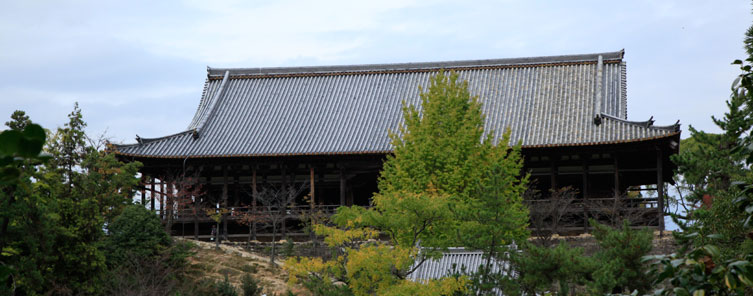Itsukushima Shrine, Miyajima
Another thing left over on the list of things to do in 2008 was to view Itsukushima Shrine and the famous floating
torii. The island, popularly known as Miyajima, is in the Inland Sea northwest of Hiroshima Bay. It is separated from the mainland by
about 500 meters or .31 miles of water. At high tide, the water flows under the shirine, and at low tide it recedes beyond the
torii.
The shrine itself has a long history. It is believed to have been originally constructed in 593. Viewers of the 2012 Taiga Drama will be
interested to know that it was a place of worship for Taira-no-Kiyomori and the Heike clan and that they re-built the shrine in the Heian
architectural style in 1168. When Mori Motonari built the present structure in 1571, he duplicated that style. The shrine was
influential for centuries, and was visited by emperors and members of the imperial court.
We took a JR train from Hiroshima, and then boarded the JR ferry for the short ride to the island.
The island is home to many deer which roam freely through the town. Unlike in Nara where people are encouraged to buy special
little packages of biscuits, feeding of the deer on Miyajima is discouraged. Try telling that to the deer, however, when you
are trying to enjoy a snack on a bench by the water. You are soon surrounded. Here are some deer pretending to be cute.
We walked through a busy shopping area to the shrine. One popular type of souvenier from
Miyajima is a type of wooden rice scoop which is said to have been invented by a monk who lived on the island. We spent quite a
long time selecting one with an appropriate sentiment in kanji, but, unfortunately, we can't seem to remember what it says.
Here's a picture of our rice paddle and one that purports to be the largest in the world.
After passing the many shops where I could easily spend an obscene amount of money on cute little cat objects, we reached
the shrine.
The current torii gate, erected in 1875, is the eighth one to stand before the shrine. It is made of wood and is coated
with vermilion lacquer. The top is thatched with Japanese cypress bark.
We paused to take pictures of each other and the o-torii before entering the shrine. We took many, many pictures of the
floating torii, which is often called one of the three most beautiful sights in Japan.
This is the East Corridor - the current entrance to the shrine. In Kiyomori's time, the entrance was
the West Corridor.
The current hanging lanterns were made of bronze in the early 1900's and are modeled after the original
iron ones that were made in 1366. At high tide, the water flows into this area.
This is the interior of the shrine.
There is a stage area outside that looks out over the water and the o-torii. Dances were held here beginning in
the Warring Period (1467-1568). Many Noh plays were also held at the shrine. While we were standing here
gazing out at the o-torii, a deer decided to wander through the water.
The five story pagoda was built in 1407, and the Buddha of Medicine is enshrined here. The bridge
was used by imperial messengers to enter the Main Shrine on important festive occasions.
Tokokuni Shrine sits on the hill overlooking Itsukushima. It was built in the late 1500's and dedicated to
Toyotomi Hideyoshi.
We spend many pleasant hours wandering about enjoying the sights. We thought about taking the ropeway up Mt.
Misen, but it was quite expensive and we felt we had summited enough mountains on this trip. The mountain is home
to monkeys and something called a racoon dog in addition to many, many deer. Some of the vegetation had a tropical
appearance.



























